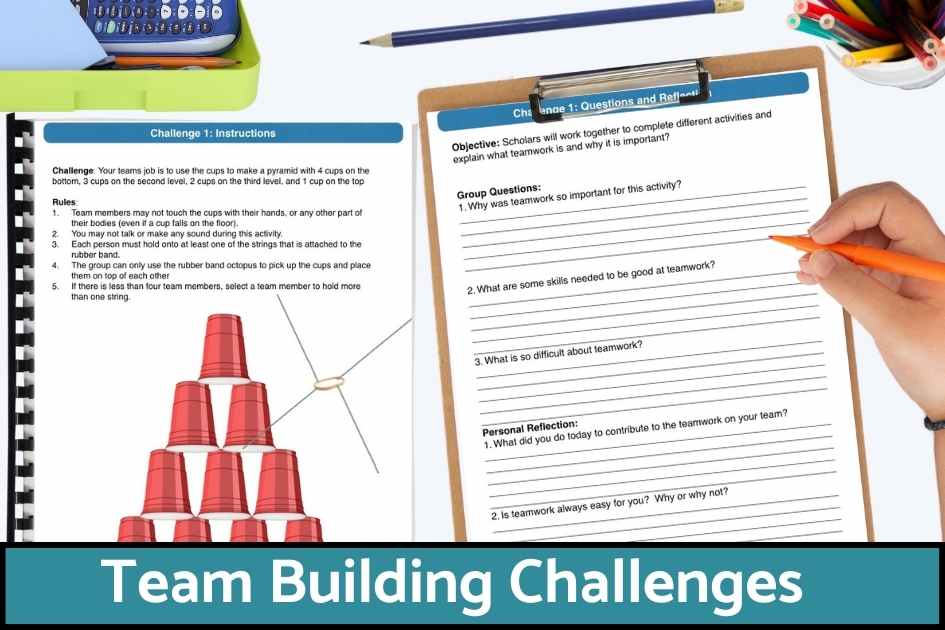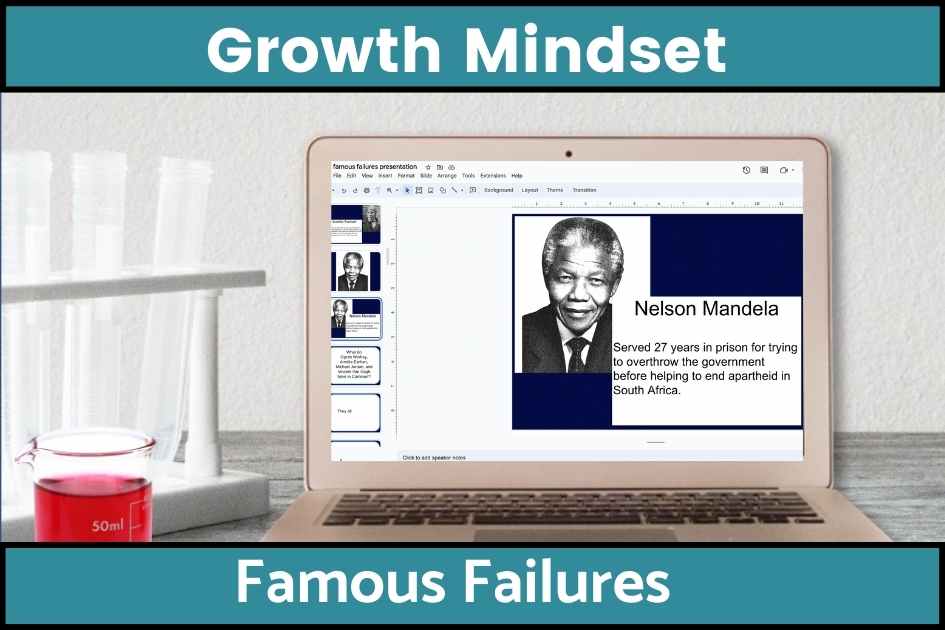As the school year approaches, many middle school students are dreading the thought of returning to the same old routine of lectures, homework, and tests. But science class doesn’t have to be a bore! These first day of school activities for middle school science are designed to get students engaged, collaborating, and feeling a sense of community, helping you set the tone of the class from day one.
First Day of School Activity Team building
On the first day of school, I like to get my students up and moving and engaged in a fun activity. The first day is when many teachers give out their syllabus and go over the school rules and class rules. The teacher does most of the talking, and the students just sit there listening and, many times, tuning out the information.
This is why I make it a point to not give out my syllabus on day one and not go over classroom rules. I do go over two or three classroom procedures for coming into class and leaving, but that is it. Instead, I like to have my students talking and engaged in a team building activity.
There are many first day of school activities on team building to choose from, and I like to change it up for the different grade levels. My school is a 7 – 8 middle school, so we only have two grade levels.
- 7th grade: Save Fred
- In this activity, the students are using paper clips to save Fred from drowning. Fred is represented by a gummy worm. He is on an upside down boat, a plastic cup and the students use the paper clips to put a gummy lifesaver onto Fred so that he doesn’t drown.
- 8th grade: Stacking cups
- In this activity, the students have to use an octopus, basically a rubber band with four strings attached to it, to grab the paper cups. They first unstack them and then create a tower. Then they can move on to the more complex challenges that have them flipping the cups and stacking them in different ways.
These first day of school activities provide students the opportunity to work together as a team, develop their communication and collaboration skills, problem solve, and create a classroom community.
First Day of School Activity: Growth mindset activity about famous failures
On the second day, I like to bring out my theme for the year. In my classroom, failures are a necessary part of learning. If students aren’t making mistakes, then they aren’t challenging themselves. I want them to understand that failure is an important part of learning.
For today’s first day of school activity on growth mindset, I have my students do a famous failures lesson. We watch a video that highlights famous failures and explains how we only see a person’s success but not the difficulties they had along the way.
Then, I have my students work in groups to each choose one of the 16 famous people to read about and take notes on. The students share their information in the group and the discover common traits they all have.
We discuss the common traits and then I have them fill out a reflection journal. In the journal they have to reflect on their own failures and accomplishments. They then talk about what they want to do and what might happen if they decide to give up after facing their first failure.
Along with the activity I have posters in the room that highlight famous people for students to look at during the year.
Teaching students about famous failures helps them develop a growth mindset. It can boost their self-confidence and motivate them to embrace academic risks. They might even see themselves in some of the diverse famous people they read about.
First Day of School Activity: Get to know your lab coat and name tent
On the third day this is when I like to do some of the borning management jobs like passing out my syllabus, going over most of the classroom procedures, and talking about classroom expectations.
As for rules, I teach 7th and 8th grade. By this time they have heard the same basic classroom rules for 6 years. They know the common rules that are in most teachers class like respect others, follow directions, don’t talk when the speaker is talking, be prepared, raise your hand. The list goes on and on. If you ask the students what some common classroom rules are they will be able to tell you.
That’s what I do. I ask them what are some common classroom rules that you have heard in school. They list them out. Then I just say, good you know what they are, the same applies in this classroom so I’m glad you already know them. Then we move on.
The rest of the class time is spent doing a get to know you lab coat activity that also become a name tent and a class expectation activity.
First day of school activity: Create a Lab Coat
During this activity the students will design their own lab coat. The lab coat is able to stand up so it also becomes a name tent. I don’t know about you but it takes me awhile to learn student names.
- They will put their name on the back of the lab coat along with three drawings that represent them.
- On the front of the lab coat they write a challenge they over came last your or a success they had on one side and then 3 words or a quote that represents them on the other side
- Inside the lab coat they write a goal for themselves for that year
Having the lab coat up on their desk allows other students and the teacher to learn more about them. It also keeps the goals they set for themselves in front of them to look at every day which can inspire them to actually reach their goals.
First day of school activity: Class expectations student involvement activity
One way to have students feel a sense of belonging and part of your class is to have them participate in setting the class and group expectations. Students have been in classrooms that felt positive and welcoming. They have been parts of groups that were successful. They have also been in classrooms that were challenging and parts of groups that were frustrating to be a part of.
This is why having them come up with their own expectations is a great way to build relationships in the classroom and help them feel that this is a place where their ideas matter.
To do this activity:
- First, have the students write in pairs what a positive learning environment looks and sounds like. What are the students doing? What is the teacher doing? How would someone that enters the classroom know that this is a positive learning environment?
- Second, have the pairs get tother with another pair so that they are in groups of four. Have the students share their ideas and come up with a top three to share with 2 bonuses.
- Third, have each group share one of their ideas and then continue to go around the groups until all ideas have been shared. If ideas are repeated put a check mark next them. If they want to add on their bonus ideas they can after all the groups have shared.
- Fourth, as a teacher you will decide on the top ten expectations to keep for the class
- Repeat the same thing but this time do it for positive learning groups.
After the top ten for the class expectations and group expectations have been generated. You will want to write them on a poster and then have all of the students sign their names on the poster which states that they are agreeing to the expectations that they themselves created.
By incorporating engaging activities in the first few days of school, us teachers can set a positive tone in our science classrooms. Team-building activities like Save Fred and Stacking Cups foster collaboration and problem-solving skills. Famous failure activities promotes a growth mindset and self-reflection. Creating lab coats allows students to express their individuality and goals, while involving students in setting class expectations fosters a sense of belonging. These activities create an environment where students feel supported, motivated, and excited to be in your classroom and in school.








